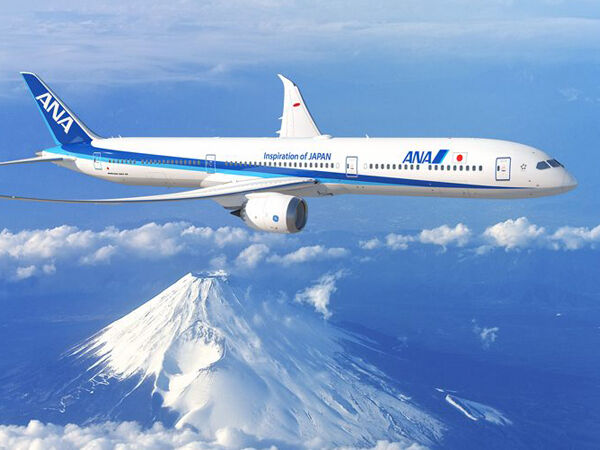The Boeing 787 Dreamliner has been making headlines since it was introduced to the public in 2003. Unfortunately, recent headlines have not been good. Boeing's manufacturing decisions for their leading-edge airplane present a good case to examine when considering outsourcing versus vertical integration.
As MIT Sloan Senior Lecturer Donald B. Rosenfield asks in his class, Developing a Leading Edge Operations Strategy, "How much supply risk is too much?"
Risk and reward for Boeing
In the case of Boeing, one could argue that their operations decisions around the manufacturing of the Dreamliner were, in fact, too risky. The company chose to have the jet designed and built mostly by other companies. Essentially, Boeing was just a large-scale systems integrator.
While the company had a record number of orders—the Dreamliner was the fastest-selling commercial jet in aviation history—the process of designing and manufacturing the jet was not a pretty one:
- The delivery date was pushed back four times and was more than two years late
- The aft fuselage consisted of 6,000 components, and many of those components failed to conform to Boeing's specified engineering tolerances, resulting in significant cost and schedule delays
- The first Dreamliner to arrive at the company's Everett, Washington, factory for assembly was missing tens of thousands of parts; the original process called for an assembly of 1,200 components, not the 30,000 pieces in which the first jet arrived
Jump forward to the more recent problems. The entire fleet of 50 Dreamliner planes was grounded in January 2013 after planes ran into issues with the lithium-ion batteries. The original batteries that were approved were made by one company, but the batteries that were actually installed in the Dreamliner today are made by a different company.
Was outsourcing the design and production of the Dreamliner the right way to go? Or did the company save money, but at great risk and high cost?
Solutions for Boeing through systems engineering
On June 11, 2013, both the FAA and Boeing told Congress that the Dreamliner is safe for air travel. But even after being cleared to fly, the Dreamliner is under constant scrutiny by the media. On balance, with just under 60 aircraft in service, the 787 has had six reported mechanical incidents in 2013. It's a higher rate of failure than more mature aircraft, ranging from the Boeing 737 to the Airbus A340, but these growing pains are commonplace for newer airliners as engineers work out the kinks. Systems engineers look at these challenges as small setbacks on the way to success, which they define as building an even better Dreamliner for safe, frequent flying.

A Systems Engineering View of the Boeing 787 Dreamliner
At first, the planes appeared to be a huge success and flew thousands of times without incident. However, two Dreamliners had failures in the lithium-ion battery system in January, causing the fleet to be grounded and Boeing to delay future deliveries. Why did this happen?
A Systems Engineering View of the Boeing 787 Dreamliner
At first, the planes appeared to be a huge success and flew thousands of times without incident. However, two Dreamliners had failures in the lithium-ion battery system in January, causing the fleet to be grounded and Boeing to delay future deliveries. Why did this happen?
According to MIT Sloan Professor Steve Eppinger, the issues the Dreamliner has faced stem less from new technology and more from the fact that this new technology is embedded in a highly-complex system. Failure in complex systems can be difficult to diagnose, and even more difficult to solve, due to all of the interconnected parts and the chain of cause and effect reactions within the system.
In the case of the Dreamliner’s first highly-public malfunction in January 2013, systems engineers found that the various parts of the Dreamliner—when tested on their own—worked. The battery system worked; the charging system worked; and the airplane as a whole worked. But together, under certain circumstances, the parts (specifically the lithium-ion batteries) failed—but not all the time. It is difficult to replicate exact fight situations under test conditions, and, thus, harder to pinpoint the problems before they occur.
How, then, can one reduce failure in a complex system? In a video interview with Eppinger, the professor says, "While we can't completely eliminate failures, the answer lies in systems engineering. This involves a process of careful design and architecture … as well as a staged integration of the entire system, and extensive qualification, verification, and validation testing."
Boeing is a pioneer in systems engineering and is known to have the best engineers in the world working to identify hundreds more failure modes, each time gaining new insight and information to build a more resilient and robust system—as well as a safe and comfortable flight for passengers.
However, in the end, the question still remains: did Boeing take on too much risk and complexity in its process to design and build the Dreamliner? What should their outsourcing strategy be next time? As Rosenfield suggests in a recent Boeing case study, "The key would be to reevaluate Boeing’s sourcing strategy and seek to operate at the 'efficient frontier' for an acceptable level of risk."
Donald B. Rosenfield is a Professor of Operations Management and Director of the Leaders for Global Operations program at MIT Sloan. He teaches in MIT Sloan Executive Education’s Developing a Leading Edge Operations Strategy program.
Steve Eppinger is a Professor of Management Science and Engineering Systems and Co-Director of the System Design and Management Program at MIT Sloan. He teaches in the Managing Complex Technical Projects and Systematic Innovation of Products, Processes, and Services programs at MIT Sloan Executive Education.








